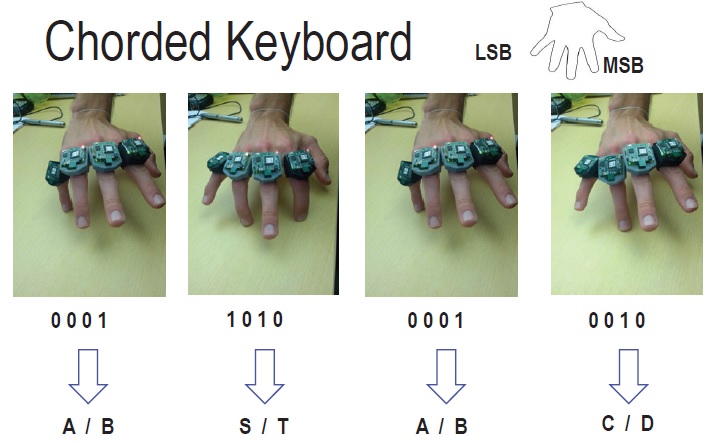Looking for a virtual keyboard or “Internet of Things” at your fingertip

“In a world where the display is embedded in the glasses, and the computer is in your pocket, you will need accelerometers at your fingertips. In this way, you will receive a keyboard, a mouse, and at least an aero guitar, wherever you need them. ”
This is the goal of one of the pioneers of the Internet of Things (IoT), Chris Pister, a professor at the University of Berkeley. Now Chris is busy trying to fit the IoT node (and in combination a set of sensors) on the chip. And on the fingertip.
The node in question is a system on a chip that contains not only a microcontroller and radio, but also sensors, an antenna, and even a solar power source. It would be enough to light such a device so that it began to exchange data with its neighbors. In fact, a device may contain many nodes to collect different types of energy: temperature, motion energy, radio energy ...
')
Now the technology of integrating the network connection into everything and everyone (integrated mote) still takes at least 3-5 years to reach a mature state. This will require many advances in the field of miniature electromechanical systems ( MEMS ) and even greater miniaturization of semiconductor technology.
Now there are prototypes on board sizes 12x15mm. In the future, the integration of all components into a single chip and even greater miniaturization.

Early prototypes and the most relevant option.
The future looks cloudless, but the present is bleak in some places. Many predictions about the development of IoT have failed. In particular, it was predicted that the number of IoT nodes by 2007 would exceed the number of cellular phones, creating a market valued at $ 8bn. Even now, the number of devices and close did not come close to the predicted.
The reason for this was the lack of reliable, standards-based and low-cost solutions from several manufacturers at once.
Fortunately, now a number of standards are being actively promoted or have already been adopted that can change the situation. In particular, the “Internet of Things” is built on the basis of the IEEE 802.15.4e standard, which uses a network topology with time synchronization. This allows transmitters to remain inactive most of the time and save energy. Routing in such a network is based on the 6TSCH (Time-Synchronized Channel Hopping) for IPv6 standard, which allows nodes to find each other.
There is already a working open-source implementation based on this approach - OpenWSN . However, it will take several years to create an appropriate standard.
You ask: "And where does Intel?". Until now, indeed, it was not very much and, but recently the situation has changed, at least from an organizational point of view. In November, the company announced the creation of a unit whose task is to promote new technologies aimed at connecting electronic devices to the data network. The division is called the “Internet of Things Solutions Group”. Doug Davis, reporting directly to the CEO (Brian Krzanich), became its head. The core products of the Internet of Things Solutions Group will be Intel Quark and Intel Atom systems on a chip, the capabilities of which will be expanded with the help of software from Wind River and McAfee subsidiaries.
IoTSG will focus on most markets for embedded devices, including industrial automation, aerospace and automotive, as well as consumer electronics. It is still difficult to say whether org will follow. The conclusions are commercial successes, but one thing is certain: Intel, like other companies, relies on the “Internet of things” - the trend towards connecting everything from floor scales to the skyscraper ventilation system to the Internet.
Well, for us, consumers, IoT and everything associated with it is still a touch to the picture of the near future.
Source: https://habr.com/ru/post/204602/
All Articles